As the crisp air of October settles in, gardeners in Zone 8 are presented with a unique opportunity to prepare their gardens for both winter and the burgeoning promise of spring. This is a month ripe for planting hardy crops and taking advantage of the mild climate.
Garlic
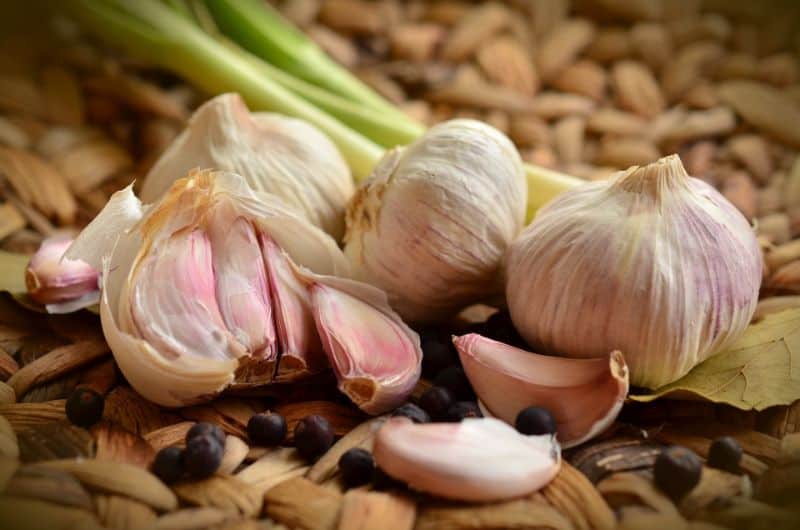
October is the optimal month to plant garlic in Zone 8, offering a straightforward planting process that yields a bountiful harvest come late spring or early summer. Garlic thrives in well-drained, fertile soil enriched with organic matter. To plant, select high-quality seed garlic from a reliable source, as this ensures healthy growth free from disease.
Begin by breaking up the garlic bulbs into individual cloves. It’s important not to peel them, but rather to plant them with the pointed end facing up, digging them about 2 inches deep and spacing them 6 to 8 inches apart. A sunny spot is essential for good growth, as garlic requires full sunlight for at least 6 to 8 hours daily. After planting, mulch the area with straw or leaves; this not only retains moisture and suppresses weeds but also protects the cloves through winter’s cold. Keep the soil slightly moist but avoid overwatering to prevent rot. With patience, by late June or July, you’ll celebrate a satisfying harvest of succulent, flavorful garlic cloves ready to enhance your culinary creations.
Shallots

Similar to garlic, shallots are another fantastic crop to plant in October within Zone 8, known for their sweet, subtle flavor and versatility in many dishes. They are generally planted with less fuss than traditional onions and yield a rich harvest. Choose quality shallot bulbs, ensuring they are firm and free of blemishes.
Plant shallots about 2 inches deep and 6 to 8 inches apart, preferably in well-draining soil that has been amended with compost or well-rotted manure. This will not only enhance their growth but also enrich the soil for future crops. Shallots prefer a sunny location, although they can tolerate partial shade.
As they grow, keep soil moisture consistent, especially during dry spells, but avoid waterlogging. Fertilizing with a balanced nutrient source halfway through their growing period can promote robust growth. Harvest shallots when the tops begin to yellow and fall over, typically in late spring to early summer. They can be stored for months in a cool, dark place, allowing you to enjoy their delicate flavor long after the harvest.
Mache
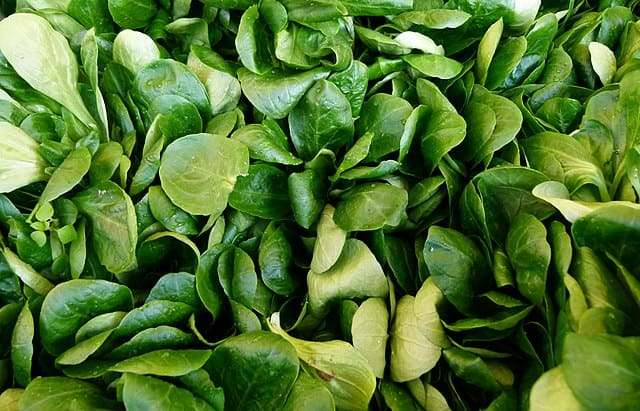
Mache, also known as lamb’s lettuce, is a lesser-known but increasingly popular fall crop in Zone 8 gardens. Its cool-weather tolerance makes October an ideal time for planting, allowing for a harvest before the chill of winter sets in. This leafy green boasts a mild, nutty flavor, making it an excellent addition to salads or garnishes.
To plant mache, choose an area with well-drained soil enriched with compost. Broadcast seeds lightly on the soil’s surface or sow them in rows, about 6 inches apart. Germination typically occurs within 7 to 14 days, and with the right moisture levels, you can expect a plentiful crop before the first frost. Mache thrives in cooler temperatures, making it ideal for autumn gardens, but it can also survive light frosts, improving its flavor profile.
Regular watering is essential to keep the soil moist but not soggy. Once the leaves are mature—around 6 to 8 weeks after planting—they can be harvested by cutting the plants just above the ground level. Mache can be enjoyed fresh or cooked and stands out for its nutritional value, being rich in vitamins A and C, as well as iron and folate.
Turnips
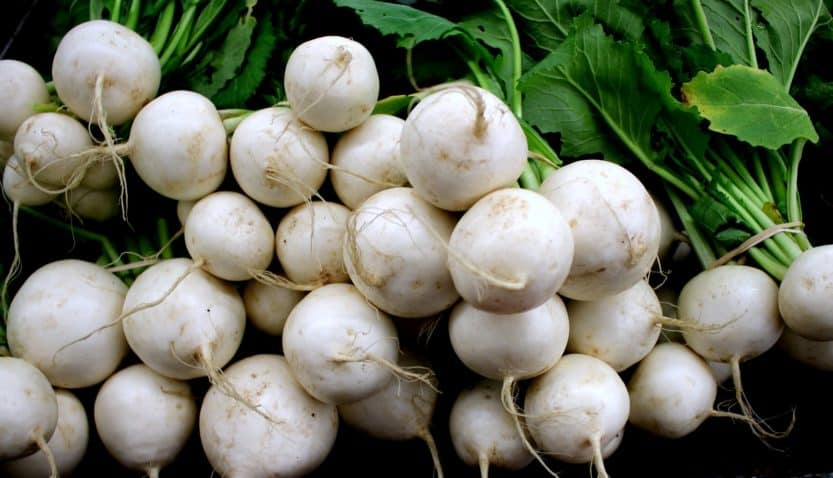
October is the perfect time to sow turnip seeds in Zone 8, as they relish the cooler temperatures that encourage rapid growth. Turnips are a versatile root vegetable, celebrated for their adaptability in the kitchen—from soups and stews to salads and stir-fries. The two primary types are the white globe and purple-top varieties, each with its own distinct flavor profile.
To plant turnips, select a site with full sun and loose, well-drained soil. A pH range between 6.0 and 7.0 is optimal. Work compost into the soil before sowing, as this will produce sweeter roots. Sow seeds about ½ inch deep, spacing them 1 to 2 inches apart, and thin seedlings to about 4 inches apart once they reach 2 inches in height. Regular watering is crucial, especially during dry spells, as consistent moisture helps reduce bitterness in the roots.
Turnips typically mature quickly—usually within 30 to 60 days—allowing for multiple harvests if staggered plantings are implemented. Young turnips are particularly sweet and tender, while larger roots can be stored for longer periods, making them a practical choice for fall garden storage. Their greens are also edible and can be harvested and cooked like any leafy green.
Cabbage
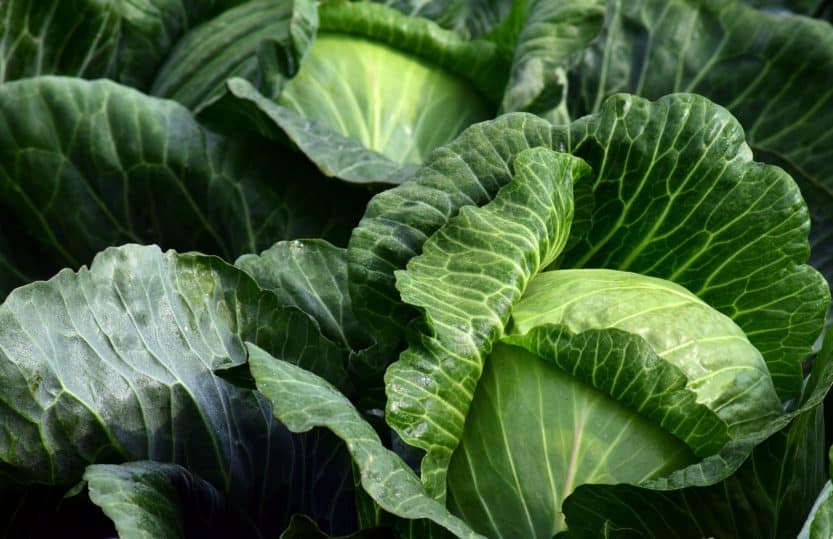
Cabbage is a quintessential fall vegetable that thrives in the moderate temperatures of October within Zone 8. With varieties such as green, red, and savoy, this hearty vegetable not only adds color to your garden but also provides essential nutrients. High in vitamins C and K, cabbage can be enjoyed in a multitude of dishes—from coleslaw to hearty casseroles.
Plant cabbage seedlings in early October to allow them ample time to mature before the frost hits. Choose a well-drained site that gets full sun for at least six hours each day. As with turnips, enriching the soil with compost or aged manure will promote healthy growth. Space the seedlings about 12 to 24 inches apart, depending on the variety, as cabbage plants need room to expand.
Cabbage requires consistent watering to keep the soil evenly moist, which helps prevent stress and encourages uniform growth. A layer of mulch can also help retain soil moisture and suppress weeds. Pay attention to pest control, as cabbage worms, aphids, and other insects may be attracted to the crops during milder weather. Regularly inspecting plants and using organic pest control methods can safeguard your harvest.
Typically, cabbage can be harvested about 70 to 100 days after planting, with heads firm to the touch. When harvesting, cut the heads off at the base, leaving a few outer leaves for partial protection during the winter months. Brought indoors, cabbages can be stored uncut in a cool, dark place, providing you with delicious, homegrown vegetables well into the winter.
Radishes
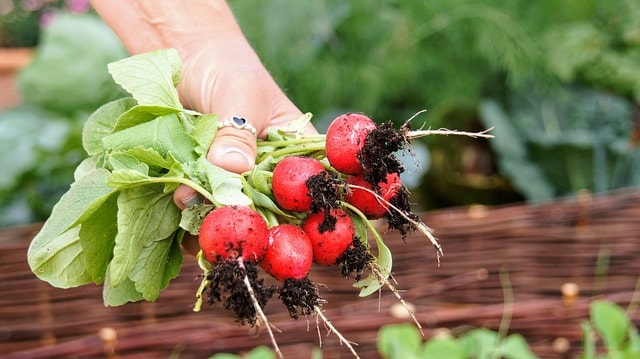
Radishes are one of the fastest-growing vegetables you can plant in October, making them a perfect crop for the impatient gardener eager for quick results. With their crisp texture and peppery flavor, radishes serve as delightful additions to salads and other dishes, and they can even be pickled for preservation.
To sow radish seeds, find a sunny spot in your garden with well-drained soil. They thrive in loose soil, so be sure to cultivate the area before planting. Sow seeds roughly ½ inch deep and space them about 1 inch apart. Given their fast growth—often ready to harvest in as little as 25 to 30 days—staggered sowing every couple of weeks can provide a continuous supply throughout fall.
Radishes flourish in cooler weather, but monitoring moisture levels is crucial as the temperature starts to dip. They prefer consistent watering to develop juicy, tender roots without becoming too woody or bitter. Watch for signs of pests, such as flea beetles, which can damage young seedlings. Using floating row covers can help protect them while allowing sunlight and water to reach the plants.
Radishes are ready for harvest when they reach the desired size, usually indicated by their coloration and firmness. Gently pull them from the soil and trim the greens; these can also be used in cooking or salads. Store any unconsumed radishes in the refrigerator to keep them crisp and fresh, making them a versatile and rewarding addition to your fall gardening success.
Kale

Kale, often dubbed a superfood, is a standout addition to any October garden in Zone 8. Its robust leaves are packed with vitamins A, C, and K as well as antioxidants, making it a powerhouse for health-conscious eaters. Kale thrives in the cool weather of fall and can even improve in flavor after a frost, developing a sweeter taste.
When planting kale in October, choose healthy seedlings or sow seeds directly into the ground. Opt for a well-draining soil enriched with compost to encourage vigorous growth. Dig shallow furrows and place seeds about ½ inch deep, spacing them approximately 12 to 18 inches apart. Kale prefers full sun but can tolerate partial shade, particularly in warmer weather.
Water your kale regularly to maintain consistent moisture, as uneven watering can lead to tough leaves. Keeping the soil throughout the growing season will help prevent pests such as aphids or cabbage worms. As the plants mature—usually within 55 to 75 days—you can begin to harvest the outer leaves as needed, allowing the inner leaves to continue growing. This way, you can enjoy a steady supply of fresh kale throughout the fall and even into winter, as it is remarkably frost-tolerant.
Spinach
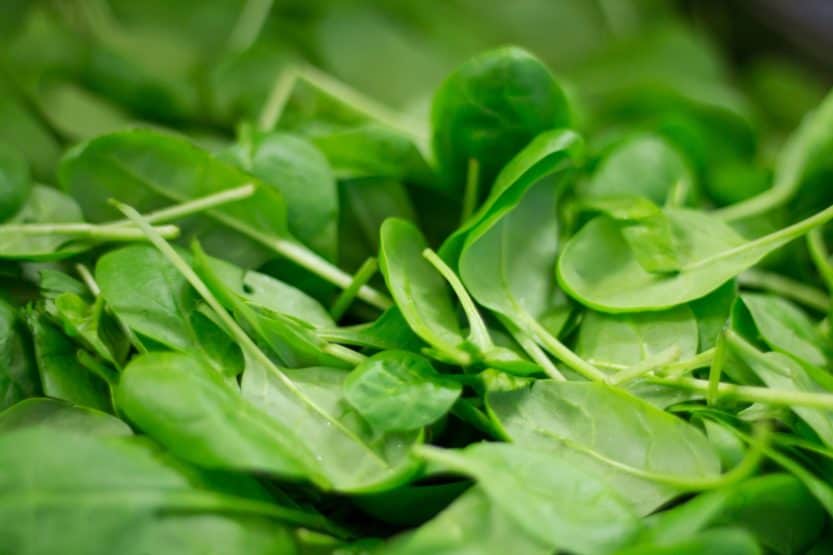
Spinach is another fantastic crop to plant in October, flourishing in the cool weather characteristic of Zone 8 during this time. Renowned for its high iron content and versatility in various cuisines, spinach is perfect for salads, soups, and smoothies. Its rapid growth allows gardeners to reap the benefits relatively quickly, making it a gardener’s favorite.
To cultivate spinach, select well-draining soil rich in organic matter. Sow seeds about 1 inch deep with spacing of about 1 to 2 inches apart. Spinach seeds can be planted closely together, as you can thin them out later for better growth. Ideally, aim for a location with full sun, although spinach can thrive in partial shade, particularly as the days grow shorter.
Maintaining consistent moisture is crucial for spinach; it prefers not to dry out. Mulching around the plants can help retain soil moisture and keep the roots cool, especially during warmer fall days. Spinach generally matures in about 30 to 50 days, and you’ll know it’s time to harvest when the leaves are large and tender. You can pick the outer leaves while leaving the inner ones to continue growing, ensuring a continual supply.
Additionally, spinach can withstand cooler temperatures and even light frost, which enhances its sweetness. For those looking to extend their harvest, consider planting a winter variety that can be sown late in the season, providing fresh greens during the winter months.
Swiss Chard
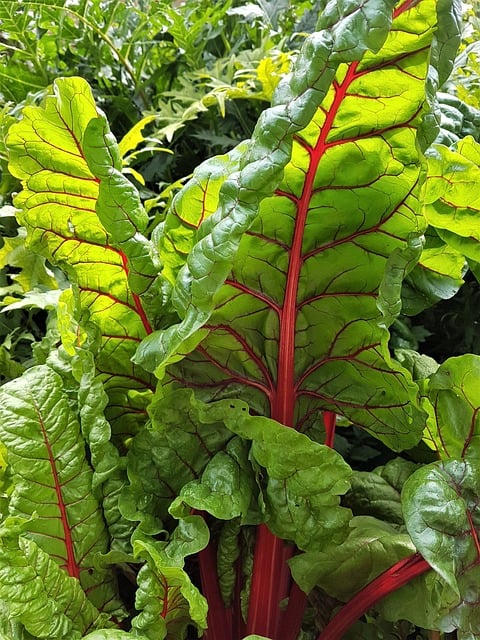
Swiss chard stands out as a colorful and nutritious leafy green, making it an excellent selection for an October garden in Zone 8. Known for its vibrant stems in shades of red, orange, and yellow, Swiss chard is both eye-catching and delicious, packed with vitamins A, C, and K, as well as minerals like magnesium and potassium.
To plant Swiss chard, choose a location with full sunlight and fertile, well-draining soil. Similar to kale and spinach, amending the soil with compost will promote healthy growth. Sow seeds directly into the ground at a depth of about ½ inch, spacing them 12 to 18 inches apart to allow ample room for their broad, leafy growth.
Swiss chard germinates relatively quickly, usually sprouting within 7 to 14 days. Ensuring consistent moisture during the early stages is essential for robust growth. Once established, these plants are surprisingly resilient and can tolerate a range of temperatures. Regularly harvesting the outer leaves encourages continued production, as Swiss chard is a cut-and-come-again crop that keeps providing through the fall.
One notable aspect of Swiss chard is its ability to remain productive well into the winter and even early spring, provided that the cold is not extreme. Its leaves can be used in a myriad of dishes—where they shine in sautéed preparations, soups, or raw in salads alongside other greens.
Arugula
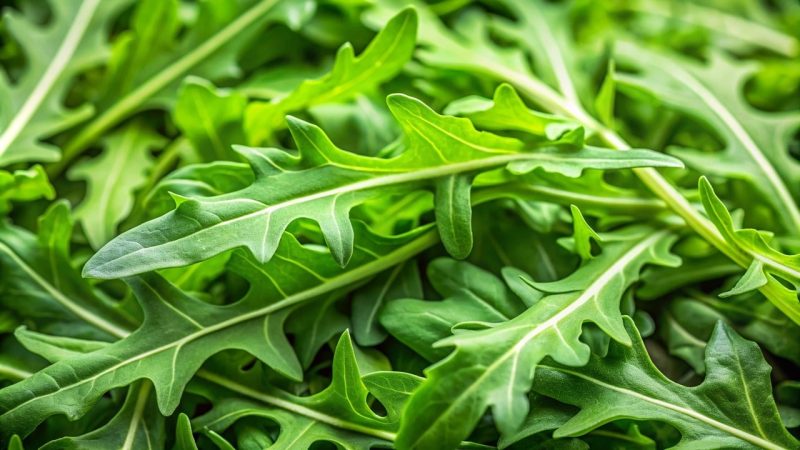
Arugula, known for its robust, peppery flavor, is an excellent choice for fall planting in Zone 8 gardens. This leafy green thrives in the cooler temperatures of October, and its quick growth cycle makes it a favorite among gardeners looking for an earlier harvest. It is packed with vitamins A, C, and K and is a versatile addition to salads, sandwiches, and pestos.
To plant arugula, select a well-drained area in full sun. It thrives in rich soil, so amending the planting bed with compost is highly beneficial. Sow seeds about 1/4 inch deep and space them approximately 1 inch apart; as they grow, you can thin them out to 6 inches apart for optimal leaf development. Arugula germinates swiftly—often within 7 to 10 days—allowing gardeners to enjoy fresh greens in as little as three weeks after planting.
For consistent flavor and texture, ensure regular watering, especially during dry spells. Arugula grows best in cooler temperatures and tends to bolt (go to seed) when days warm significantly, making it important to monitor the weather and harvest promptly. Besides its culinary uses, arugula’s flowering, if allowed, attracts pollinators such as bees and butterflies, enhancing your garden’s biodiversity.
October Flowers to Plant in Zone 8
Pansies

As fall progresses, planting pansies adds delightful color and a touch of whimsy to any Zone 8 garden. These cheerful blooms flourish in cooler weather and can even withstand light frosts, making them ideal for October planting. Beyond their decorative appeal, pansies are edible flowers, bringing not only visual flair but also a unique flavor to salads and garnishes.
For successful pansy cultivation, choose a location that receives partial to full sunlight. Well-drained soil mixed with organic matter will foster healthy growth. Plant pansy seedlings about 6 to 8 inches apart, as they will spread out and fill in over time. Water the plants regularly, especially if it’s a dry fall, but also ensure they have good drainage to avoid root rot.
Pansies’ blooming season generally lasts throughout the fall and into early spring, making them a long-lasting addition to the landscape. When you notice spent blooms, pinching them back can encourage more flowers and keep your garden looking fresh. Additionally, the vibrant colors of pansies can inspire seasonal decorations and complement the changing foliage around your garden, contributing to the autumn spirit.
Tulips

Although tulip bulbs are primarily associated with springtime blooms, October is the perfect time to plant them in Zone 8. Planting tulips now allows them to establish roots before the onset of winter, resulting in stunning displays of color as they bloom in early spring. These perennial favorites come in an array of colors and sizes, providing endless options to suit any garden aesthetic.
To plant tulips, select a well-drained location that receives full sun for at least six hours a day. Prior to planting, work the soil, ensuring it is loose and enriched with compost. Dig holes about 6 to 8 inches deep, spacing the bulbs 4 to 6 inches apart with the pointed end facing up. Tulips thrive in well-drained soil, so it’s crucial to avoid overly wet conditions that can lead to bulb rot.
After planting, water the area deeply to help the bulbs settle in. As the weather cools, the tulip bulbs will undergo a chilling period, which is necessary for blooming. Although the flowers remain dormant in winter, the preparation done in fall ensures they emerge stronger and more vibrant. In early spring, as the weather warms, you can look forward to breathtaking blooms that herald the arrival of spring and brighten your garden.
Hyacinths
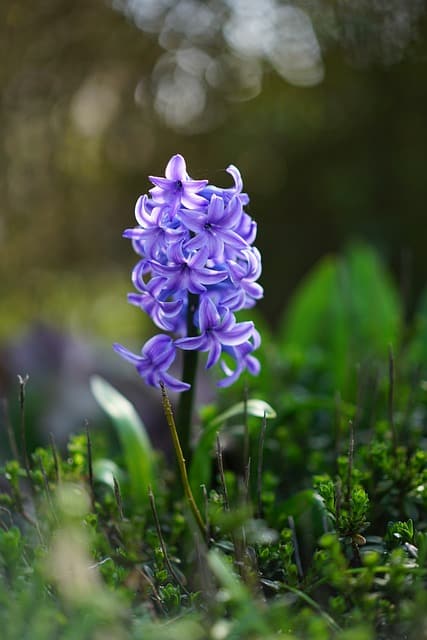
Hyacinths are a springtime favorite, known for their lush, densely packed blooms and intoxicating fragrance. Their strong scent and rich colors can turn any garden into a sensory delight. In October, planting hyacinth bulbs allows them to establish roots before the winter chill sets in, ensuring a vibrant display comes spring.
For successful planting, select a spot that receives full sun or partial shade; well-draining soil is crucial, as hyacinths prefer not to sit in waterlogged conditions. Plant the bulbs about 6 to 8 inches deep, with the pointed end facing upward, and space them 4 to 6 inches apart. Before planting, incorporating a little sand into the planting hole can improve drainage, crucial in avoiding bulb rot.
Once planted, it’s beneficial to give the bulbs a good watering to settle them in, but be mindful not to overwater them at this stage. Hyacinths do well in slightly cooler conditions, so they will remain dormant through the winter months. As the temperature rises in spring, you can expect the emergence of their gorgeous flowers, which will bloom in various colors, from deep purples and blues to striking pinks and whites. These flowers also attract pollinators, adding to the biodiversity of your garden while providing a welcoming aroma to your outdoor space.
Crocuses

Crocuses are among the first flowers to bloom in spring, making them a delightful addition to any Zone 8 garden. With their bright, cup-shaped flowers appearing as winter recedes, crocuses serve as a cheerful herald of the changing seasons. These resilient bulbs are planted in October, taking advantage of the cooler temperatures to establish roots.
When choosing a location for your crocuses, opt for well-drained soil that receives full sun or partial shade. Plant the bulbs about 3 to 4 inches deep and space them around 3 inches apart. Crocuses come in a range of colors, including yellows, whites, and purples, so consider planting them in clusters for a more impactful visual display.
Crocuses thrive in varied conditions, including lawns and garden beds, making them versatile for landscape design. After flowering, let the foliage remain for a few weeks; this process allows the plant to store energy for the following season. Once they have faded, the leaves can be trimmed back, but be sure not to cut them too early, as this will affect the bulb’s growth for next year.
In addition to their beauty, crocuses can also attract beneficial insects to your garden, acting as early food sources for pollinators. With their low-maintenance nature and ability to naturalize over time, crocuses are an excellent choice for gardeners seeking to add spring blooms year after year.
Anemone
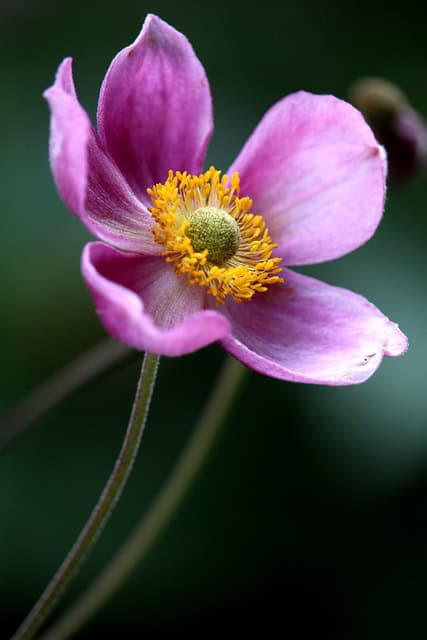
Anemones, with their delicate petals and lush foliage, are a fantastic choice for October planting in Zone 8. Known for their varied forms and colors—from soft pastels to vibrant brights—anemones can add texture and elegance to any garden. These perennial plants blossom in early to mid-spring, providing a captivating focal point in the landscape.
For optimal growth, plant anemone bulbs in a location that receives partial shade to full sun, ideally in soil that is rich and well-drained. Depending on the specific variety, you can plant them about 2 to 4 inches deep, with spacing at 6 to 12 inches apart. When investing in anemones, it’s important to know the difference between fall-planted varieties (like the fall-blooming Anemone hupehensis) and spring-planted types, ensuring you choose the right ones for your October planting.
Water the bulbs well after planting, allowing moisture to help settle them into the soil, but take care not to overwater. Anemones can take some time to establish themselves, but once they are rooted, they are remarkably hardy and will provide a stunning carpet of blooms in spring.
These flowers are also relatively low-maintenance; they thrive in most conditions and will naturalize over time. Once the blooms start to fade, allow the foliage to remain until it naturally dies back, as this will help nourish the roots for the next blooming season. Anemones are also attractive to pollinators, making them not just beautiful additions to your garden but also beneficial ones.
Irises
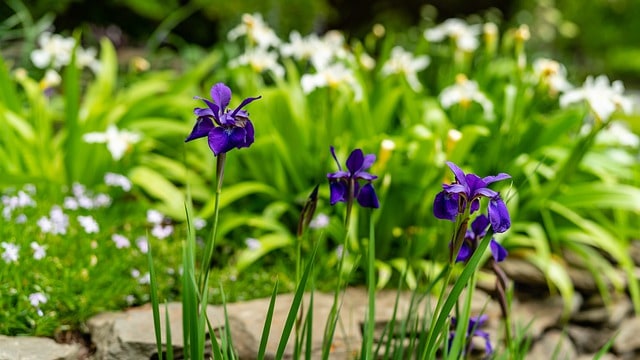
Irises are iconic perennials known for their striking, sword-like foliage and stunning blossoms that can range from deep blues to vibrant yellows and delicate whites. Planting irises in October allows them to establish strong roots before the winter season, ensuring they make a grand appearance in your garden come spring.
For optimal growth, irises prefer well-drained soil and full sunlight, although many will tolerate partial shade. It’s essential to ensure good drainage, as they are prone to rot if their rhizomes (horizontal underground stems) sit in soggy conditions. When planting irises, dig a hole that accommodates the rhizome comfortably, making sure it is planted just below the soil surface with the top exposed. Space them at least 12 to 18 inches apart to allow for their spread.
Regular watering during the initial establishment phase is crucial, but once they are settled, irises are quite drought-tolerant. These hardy perennials typically bloom in late spring to early summer and can bring lasting beauty to your garden year after year. Moreover, irises provide excellent cut flowers, adding color and elegance to indoor arrangements.
Hellebores
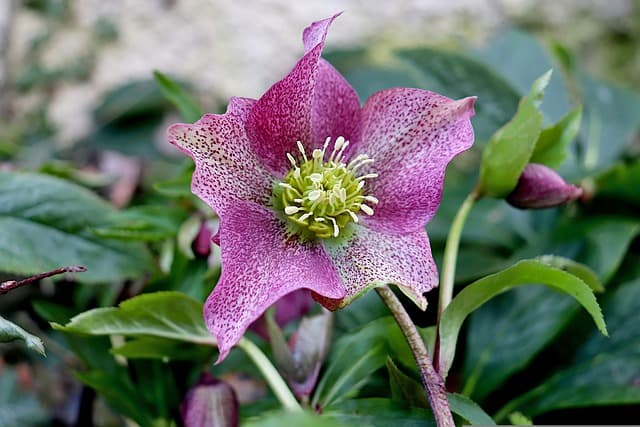
Hellebores, often referred to as “Lenten roses,” are distinctive perennials that thrive in the cooler months and are particularly well-suited for planting in October in Zone 8. Renowned for their early spring blooms, hellebores display an array of colors, including creamy whites, deep plums, and soft pinks, often adorned with unique speckling.
When planting hellebores, look for a location that offers partial shade, ideally with protection from harsh winter winds. These plants thrive in rich, organic soil that drains well, so consider amending your soil with compost or leaf mold to create the perfect environment. Plant hellebores about 1 to 2 feet apart and at a depth that allows the crown of the plant to be just at soil level.
One of the many appeals of hellebores is their ability to bloom even when snow is still on the ground, bringing much-needed color to winter-weary gardens. After flowering, the lush, evergreen foliage provides interest throughout the year and can act as a backdrop for other blooms in your garden. In terms of maintenance, hellebores require little fuss; simply deadhead spent blooms and remove old leaves in late winter to encourage new growth and better air circulation, which helps prevent disease.
Fruit Trees

October is an excellent time to plant fruit trees in Zone 8. The moderate temperatures and ample moisture that often accompany the season provide an ideal environment for establishing new trees. Whether you’re interested in apples, peaches, or citrus, planting fruit trees can lead to bountiful harvests and rewarding gardening experiences in the years to come.
When selecting fruit trees, consider your local climate and soil conditions, as well as the amount of sunlight available in your chosen planting location. Most fruit trees thrive in full sun, so select a spot that receives at least six hours of sunlight per day. Prepare the planting site by digging a hole that is twice the width of the root ball and about the same depth.
It’s vital to choose healthy, disease-resistant varieties suited to your growing zone to ensure the best yield and longevity. After planting, water thoroughly and apply mulch to help retain moisture and suppress weeds. Establishing a regular watering routine is crucial for young fruit trees, particularly during dry spells, to encourage deep root growth.
As the years progress, the sight of your trees blossoming in the spring and fruiting in the late summer or fall will be immensely satisfying. In addition to providing fresh produce, fruit trees also enhance your garden’s beauty, offering lush foliage and inviting wildlife such as birds and beneficial insects. Keep in mind that many fruit trees will start bearing fruit only after a few years, but the anticipation and eventual harvest will reward your patience, making it all worthwhile.
Zone 8 October Garden Tips
Soil Preparation
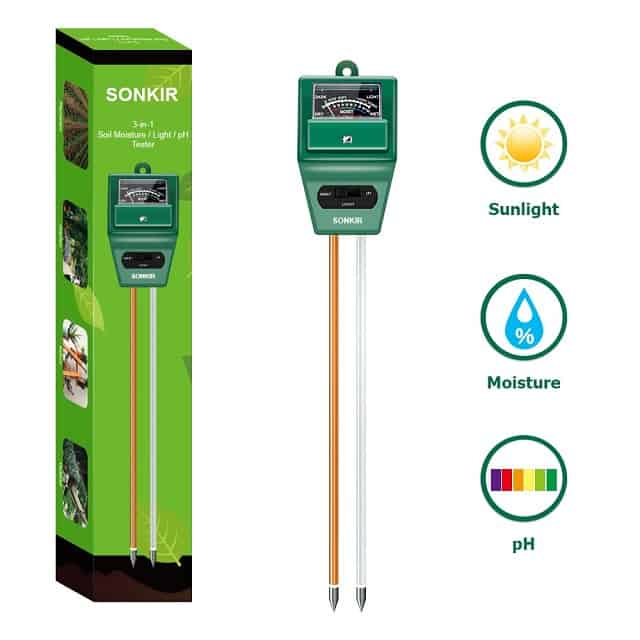
October is an ideal time to focus on soil preparation, a step that often determines the success of your gardening endeavors in Zone 8. As the growing season winds down, taking the time to amend and enrich your soil can lead to healthier plants and improved yields in the following year. The key components include testing your soil, adding nutrients, and using cover crops.
Start by testing your soil to understand its pH level and nutrient content. Home testing kits can provide insights, or you can send a sample to a local agricultural extension office for a more detailed analysis. Based on the results, you can amend your soil with the necessary nutrients. Common amendments include compost, aged manure, and specific fertilizers that cater to the deficiencies identified in your soil test.
In addition to amending the soil, consider planting cover crops such as clover or vetch in vacant beds. Cover crops help prevent soil erosion, suppress weeds, and improve soil structure as they grow. When tilled under in the spring, they enrich the soil with organic matter and nutrients, paving the way for a robust garden come planting season.
Maintaining healthy soil is a foundational aspect of all gardening, so dedicating time in October to enrich your growing medium will set you up for success in the coming months.
Ornamental Grasses
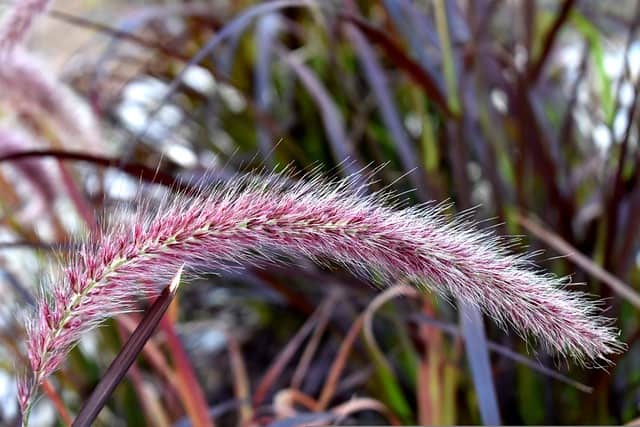
Ornamental grasses can be a stunning addition to your Zone 8 garden, especially during the transition from summer to fall. Their graceful forms and ability to sway in the breeze add a dynamic element to landscapes. Planting these grasses in October allows them to establish roots before winter, ensuring they bloom beautifully in the following spring and summer.
The variety of ornamental grasses available is vast, ranging from the airy foxtail grass (Alopecurus pratensis) to the striking miscanthus (Miscanthus sinensis) with its plume-like flowers. When selecting grasses, consider their height, texture, and growth habit. Many grasses can stand tall throughout winter, providing visual interest even when other plants decline.
When planting, select a site with well-drained soil and ample sunlight. Ornamental grasses thrive in a variety of soil types but do appreciate good drainage. Space them according to their mature size, allowing for full growth and ease of air circulation.
Once established, ornamental grasses are relatively low-maintenance. They generally require little watering, except during prolonged droughts, and can tolerate a range of soil conditions. In late winter or early spring, cut back the previous year’s growth to encourage new growth and maintain a tidy appearance. The soft texture of these grasses combined with their ability to catch the light will create a beautiful backdrop for other fall and winter blooms.
Managing Pests

October can bring about a shift in pest activity within your Zone 8 garden as temperatures begin to cool. It’s important to evaluate and manage pest populations now to prevent infestations when new growth appears in spring. A proactive strategy focusing on prevention and control will help maintain the health of your garden.
Start by inspecting your plants for any signs of pest damage, such as discolored leaves, signs of chewing, or sticky residue. Early detection is key, as it allows you to take action before pests multiply. Organic pest control methods are often effective and environmentally friendly. Consider introducing beneficial insects like ladybugs and lacewings, which can help control aphid populations.
Another effective pest management strategy during this time is to utilize insecticidal soap or neem oil for a natural treatment of common pests such as spider mites or aphids. Spraying your plants during the early morning or late afternoon can minimize the impact on beneficial insects while targeting the pests specifically.
Additionally, maintaining good garden hygiene can significantly reduce pest populations. Remove spent flowers, fallen leaves, and any plant debris that could harbor pests or diseases. Consider rotating crops in the spring to disrupt any pest life cycles, ensuring a more successful growing season ahead.
October Garden Chores Zone 8
As the vibrant colors of fall sweep across Zone 8, October presents a crucial opportunity for gardeners to prepare their landscapes for winter and set the stage for a bountiful spring. Engaging in essential garden chores during this month ensures that your garden remains healthy, productive, and visually appealing throughout the colder months. Let’s explore some critical tasks to tackle this October, including fall clean-up, establishing winter protection for your plants, and planning for next season.
Fall Clean-up
One of the most significant tasks in October is performing a thorough fall clean-up. As leaves begin to fall and perennials start to die back, it’s important to tidy up your garden to prevent pests and diseases from overwintering in your soil and plant debris. Begin by raking leaves and collecting spent annuals and perennials that have faded.
While it might be tempting to leave everything in place for winter aesthetics, this step is crucial for maintaining garden health. Pests such as aphids, slugs, and various fungal diseases can harbor in decaying plant material and emerge when growth resumes in spring. However, consider leaving the stems of some perennials intact for winter interest and to provide habitat for beneficial insects.
After gathering the debris, you can either compost the healthy materials or dispose of diseased plants appropriately. Additionally, this is an excellent time to turn your compost pile to aerate it, which helps speed up the decomposition process.
As you clean up, take the opportunity to inspect your garden tools, clean them, and store them properly for the winter season. Sharpening blades and oiling metal parts will ensure that they’re ready for use when spring arrives.
Establishing Winter Protection
October is also the perfect time to establish winter protection for your vulnerable plants. In Zone 8, while winters can be mild, unexpected cold snaps can still pose a threat. Therefore, implementing strategies to protect your garden from harsh elements can save your plants from damage.
Consider mulching your flower beds and around the base of perennials to insulate roots and retain moisture. Organic materials like straw, shredded leaves, or wood chips are excellent choices. Aim for a 2- to 4-inch layer of mulch to effectively insulate roots while allowing for proper drainage.
For tender plants, especially those that might not be fully hardy in your zone (like some hydrangeas or tropical plants), consider covering them with protective fabric or burlap during particularly cold nights. Another option for container plants is to move them closer to the house or into a sheltered area to mitigate extreme temperature fluctuations.
If you have young trees or shrubs, wrapping their trunks with burlap can help protect against frost damage, critters, and sunscald. Additionally, staking young trees might be necessary to prevent them from bending or breaking under the weight of winter snow or ice.
Planning for Next Season
While October may seem like the end of the gardening season, it’s actually an excellent time to start planning for next year. Take a moment to evaluate what worked well in your garden this past season and what didn’t. Keeping a gardening journal can be highly beneficial for recording these observations, plus any changes you’d like to make for the upcoming year.
Consider your crop rotation plan if you grow vegetables. Different families of plants should be grown in different spots each year to reduce the risk of pests and diseases. Think about what new varieties you’d like to try or what perennial plants you wish to add for added structure and visual interest. As October ends, many nursery centers begin to offer discounts on perennials and bulbs, presenting a perfect opportunity to diversify your garden without breaking the bank.
Another integral aspect of planning is ensuring that your soil health remains a priority. Consider purchasing cover crop seeds, which you can sow in vacant beds to improve soil structure and nutrients over winter. Varieties such as clover or winter rye can be tilled into the soil before spring planting, enriching it with organic matter.






